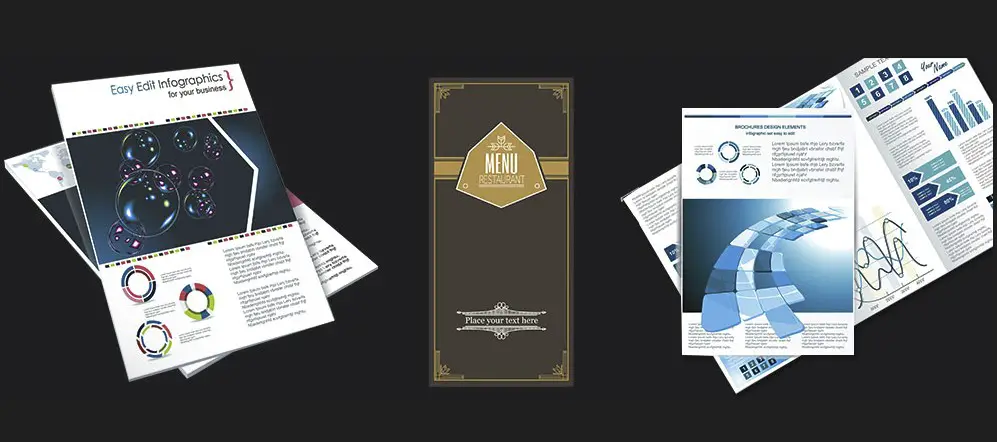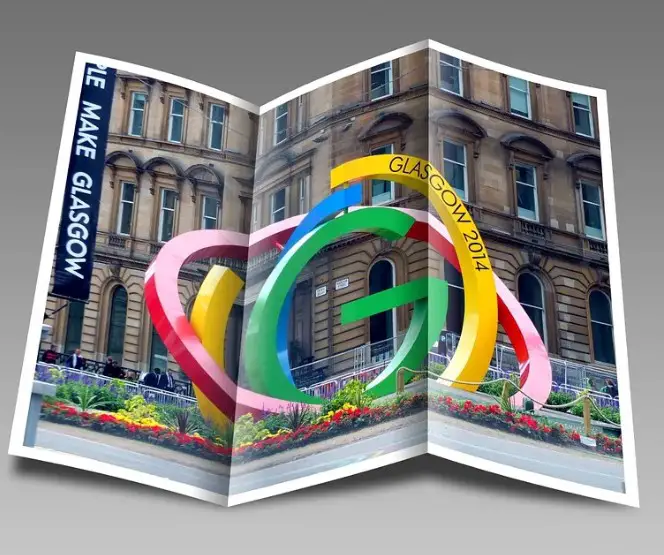In today’s fast-paced world, effective communication is key, whether it’s spreading awareness, sharing information, or advertising products and services. Among the plethora of options available for such purposes, leaflets and pamphlets stand out for their simplicity, effectiveness, and versatility. These printed materials, despite being often used interchangeably, have distinct characteristics that serve different communication needs.
The difference between a leaflet and a pamphlet primarily lies in their design, content, and purpose. A leaflet is typically a single sheet of paper that is either flat or folded and is used for mass distribution. It’s concise, focusing on a single message or campaign. On the other hand, a pamphlet is more detailed and booklet-like, usually consisting of multiple pages bound together, aimed at providing comprehensive information on a particular topic or issue.
Understanding these differences is crucial for businesses, organizations, and individuals to choose the right type of document for their specific needs. Leaflets are ideal for brief, impactful messages intended to reach a wide audience quickly, while pamphlets offer a deeper dive into a subject, making them perfect for educational or informative purposes where more detail is required.

Definitions
Leaflet
Basic Characteristics
A leaflet is a single sheet of paper used for advertising or for informational purposes. Typically, it is printed on one or both sides and can be folded but not bound. Its lightweight nature makes it easy to distribute, offering a cost-effective way to share information quickly and broadly.
Common Uses
Leaflets serve a wide range of purposes including, but not limited to, promoting products or services, informing the public about events or campaigns, and disseminating educational material. They are favored for mass distribution in public places or through direct mail campaigns, thanks to their simplicity and ease of production.
Pamphlet
Basic Characteristics
A pamphlet is a small booklet or brochure, usually consisting of a few sheets of paper that are stapled, stitched, or otherwise bound together. Unlike a leaflet, it provides more comprehensive information on a topic, allowing for a deeper dive into the subject matter.
Common Uses
Pamphlets are commonly used to educate readers about a specific topic, product, or service in detail. They are often found in medical offices, tourist information centers, and as part of direct marketing materials. Their format is particularly suited to conveying more complex or valuable information that the reader might want to refer back to or keep.
Physical Attributes
Size and Shape
Typical Dimensions
Leaflets often come in standard sizes such as A5 (148 x 210 mm) or A4 (210 x 297 mm), making them easy to handle and distribute. Pamphlets, on the other hand, may vary more in size but typically adopt a booklet format, slightly larger than a leaflet to accommodate more content.
Shape Variations
While both leaflets and pamphlets primarily follow rectangular shapes, creative designs might experiment with different contours to attract attention or fit specific distribution needs.
Paper Quality
Material Used for Leaflets
Leaflets are typically printed on thinner, lighter paper grades, ranging from 80 to 150 gsm (grams per square meter), to facilitate mass distribution and reduce costs.
Material Used for Pamphlets
Pamphlets, requiring durability and a quality feel, are usually printed on heavier paper, from 130 to 250 gsm. This enhances the tactile experience and supports the inclusion of detailed imagery and text.
Design Elements
Color Schemes and Imagery
Vibrant colors and compelling imagery are key in leaflet design, aimed at catching the eye and conveying messages quickly. Pamphlets may use a more sophisticated color palette to complement the in-depth content and brand identity.
Text and Typography
Clear, readable typography is essential for both formats. Leaflets often use bold, large fonts for headlines to grab attention, while pamphlets might employ more varied typography to guide the reader through different sections of content.
Content and Purpose
Leaflet Content
Information Density
Leaflets are designed to communicate messages succinctly and effectively, often using bullet points, catchy headlines, and simple visuals to enhance comprehension and recall.
Call to Action
A clear call to action is crucial, urging the recipient to take a specific step, such as visiting a website, attending an event, or making a purchase.
Pamphlet Content
Depth of Information
Pamphlets provide a more comprehensive overview of a subject, incorporating detailed explanations, background information, and potentially, case studies or testimonials.
Target Audience
The content of a pamphlet is tailored to the interests and needs of a specific audience, aiming to engage them with relevant, valuable information.
Production and Distribution
Printing Process
Leaflet Printing Techniques
Leaflets are often produced using digital or offset lithography printing, allowing for high-quality, cost-effective runs, especially suitable for large volumes.
Pamphlet Printing Techniques
Pamphlet production may also utilize digital and offset printing but might include additional finishing processes such as folding, stapling, or perfect binding, contributing to a more polished final product.
Distribution Channels
How Leaflets are Distributed
Distribution strategies for leaflets include handouts in public spaces, insertion in newspapers, direct mail, or placement in strategic locations like shops or event venues.
How Pamphlets are Distributed
Pamphlets are frequently distributed directly to the target audience, through mailings, at point-of-sale displays, in waiting rooms, or at events where the detailed content can be appreciated and retained by interested parties.

Cost Implications
Production Costs
Cost Factors for Leaflets
When producing leaflets, several cost factors come into play:
- Paper quality: Higher gsm (grams per square meter) paper is more expensive.
- Color printing: Full-color prints cost more than black and white.
- Volume: Large quantities can reduce the cost per unit due to economies of scale.
- Design complexity: Custom designs may require professional graphic design services, adding to the overall cost.
Cost Factors for Pamphlets
For pamphlets, similar factors affect the cost:
- Binding type: Stapled, stitched, or perfect bound, each adds different costs.
- Page count: More pages mean more material and higher printing costs.
- Finish options: Glossy or matte finishes and other customizations can increase costs.
- Design services: Like leaflets, professional design can add significantly to the cost.
ROI Considerations
Measuring Effectiveness of Leaflets
The return on investment (ROI) for leaflets can be measured through:
- Redemption rates: Tracking codes or coupons can help measure how many people respond to the call to action.
- Foot traffic: Increases in store visits or event attendance after distribution can indicate success.
- Brand awareness: Surveys before and after distribution can assess changes in brand recognition.
Measuring Effectiveness of Pamphlets
For pamphlets, effectiveness might be measured by:
- Lead generation: The number of inquiries or sign-ups resulting from the pamphlet.
- Sales conversion: Tracking sales linked directly to pamphlet distribution.
- Engagement: Time spent reading the pamphlet and actions taken afterward can indicate deeper engagement with the content.
Environmental Impact
Sustainability Aspects
Recycling and Biodegradability of Materials
Both leaflets and pamphlets should consider:
- Paper sourcing: Choosing recycled or sustainably sourced paper reduces environmental impact.
- Ink type: Soy or vegetable-based inks are more environmentally friendly than petroleum-based inks.
- Recyclability: Ensuring materials are recyclable or biodegradable can minimize waste.
Environmental Footprint of Production
- Digital printing: Generally has a lower environmental impact compared to offset printing, due to reduced waste and energy usage.
- Distribution methods: Electronic distribution options can be considered for both leaflets and pamphlets to reduce the carbon footprint.
Choosing Between Leaflet and Pamphlet
Factors to Consider
Purpose of the Material
- Quick information vs. detailed insight: Choose leaflets for brief messages or calls to action, and pamphlets for more comprehensive information or storytelling.
Budget Constraints
- Cost-effective vs. investment: Leaflets are more budget-friendly for wide distribution, while pamphlets represent a higher investment in detailed communication.
Environmental Concerns
- Sustainability options: Consider the environmental impact of your choice, opting for digital versions or eco-friendly materials when possible.
Examples of Effective Use
Case Study: Successful Leaflet Campaign
A local pizza restaurant launched a leaflet campaign by distributing flyers in the neighborhood featuring special discount codes. The campaign resulted in a 20% increase in orders within the first week. Key to their success was:
- Eye-catching design: Bright colors and appetizing images of pizzas.
- Clear call to action: A prominent discount code and expiration date.
- Strategic distribution: Targeting residential areas during early evenings.
Case Study: Successful Pamphlet Strategy
A healthcare clinic introduced a series of informational pamphlets on various health topics available in their waiting room. Over several months, they noticed:
- Increased engagement: Patients spent more time reading the pamphlets, leading to better-informed consultations.
- Higher retention: Many patients took pamphlets home, suggesting a lasting impact.
- Positive feedback: The clinic received compliments for providing valuable health information, enhancing its reputation.
Frequently Asked Questions
What is a leaflet?
A leaflet is a small piece of paper, often folded, designed to be distributed freely to people, providing them with information about a specific event, product, or service. It’s an effective marketing tool for announcements or short-term promotions due to its concise nature and ease of distribution.
What is a pamphlet?
A pamphlet is a small booklet or brochure that contains detailed information about a particular subject. It’s used to educate readers or provide in-depth insight into services, products, or organizations. Pamphlets are typically longer than leaflets and are designed to be more engaging and informative over a longer period.
How do you decide whether to use a leaflet or a pamphlet?
Choosing between a leaflet and a pamphlet depends on your objectives. If your goal is to quickly spread the word about a single message or event, a leaflet’s brevity and ease of distribution might be more effective. However, if you aim to provide detailed information, background, and context about a topic, service, or product, a pamphlet would be more suitable due to its comprehensive nature.
Can leaflets and pamphlets be environmentally friendly?
Yes, both leaflets and pamphlets can be environmentally friendly. This is achieved by using recycled paper, biodegradable inks, and ensuring that the materials used in their production and distribution are sustainable. Many printing services offer eco-friendly options to reduce environmental impact.
Conclusion
In conclusion, while leaflets and pamphlets are both essential tools in the realm of communication and marketing, understanding their distinct differences helps in choosing the right medium for your message. Leaflets, with their concise content and broad distribution, are perfect for quick, impactful announcements. Pamphlets, offering more detailed information, cater to those looking to educate or provide comprehensive insights. Making the right choice between the two can significantly enhance the effectiveness of your communication strategy.
Both mediums have evolved to meet modern environmental concerns, with options for sustainable production and distribution. In leveraging the strengths of each, organizations and individuals can ensure their messages not only reach their intended audience but do so in a way that aligns with their goals and values, making the most out of these classic yet versatile communication tools.
